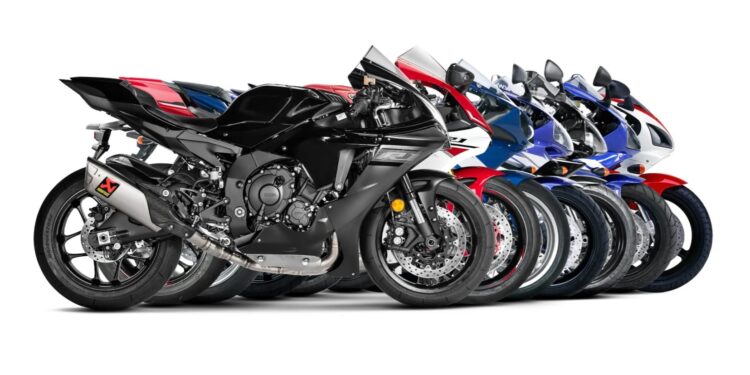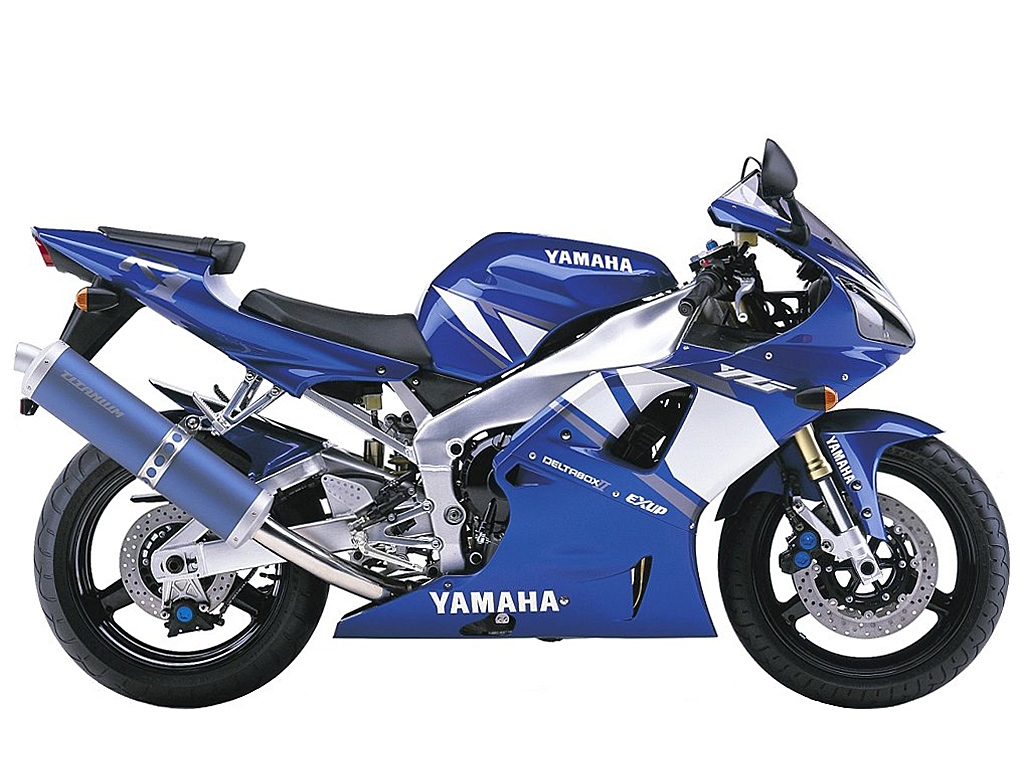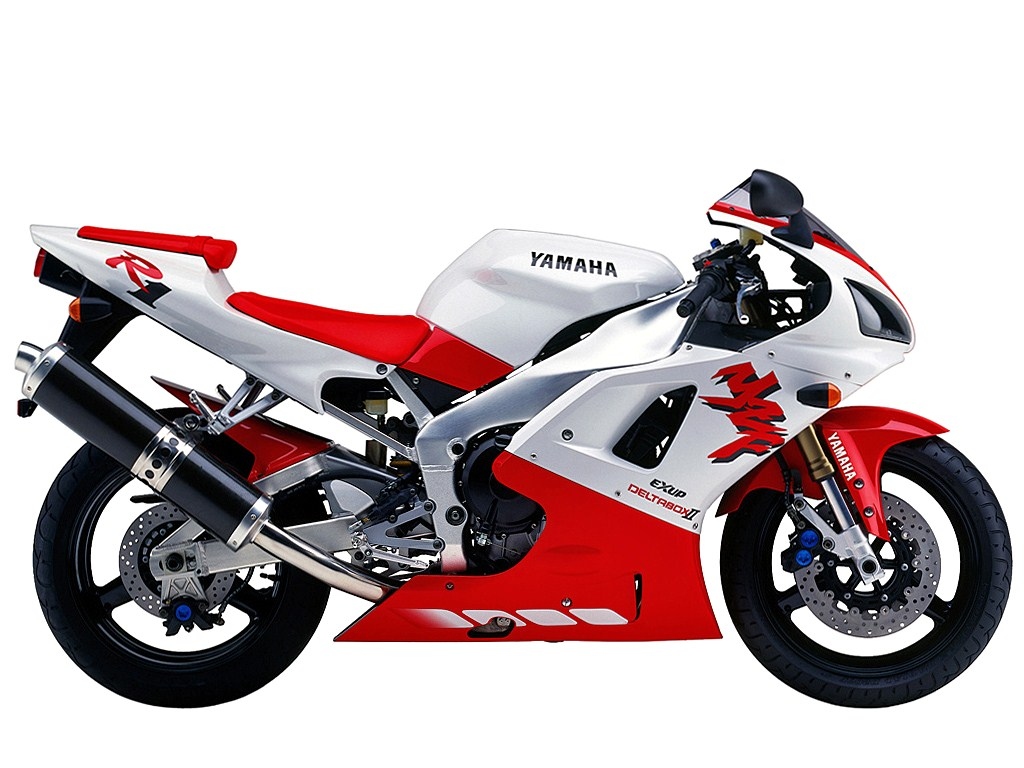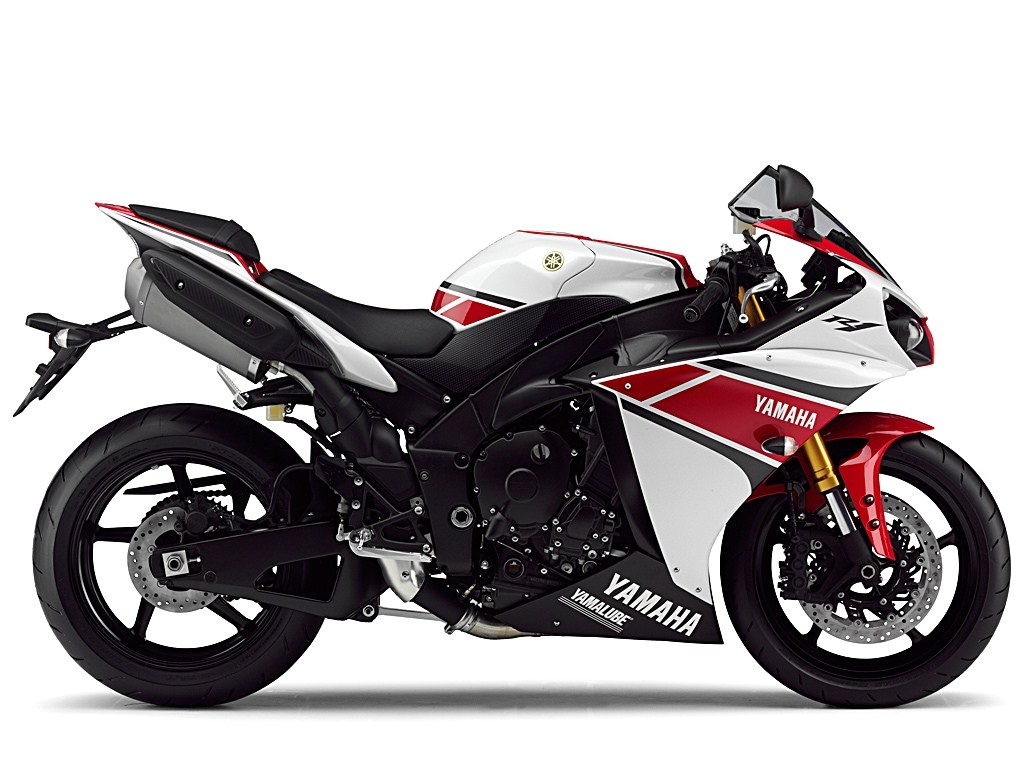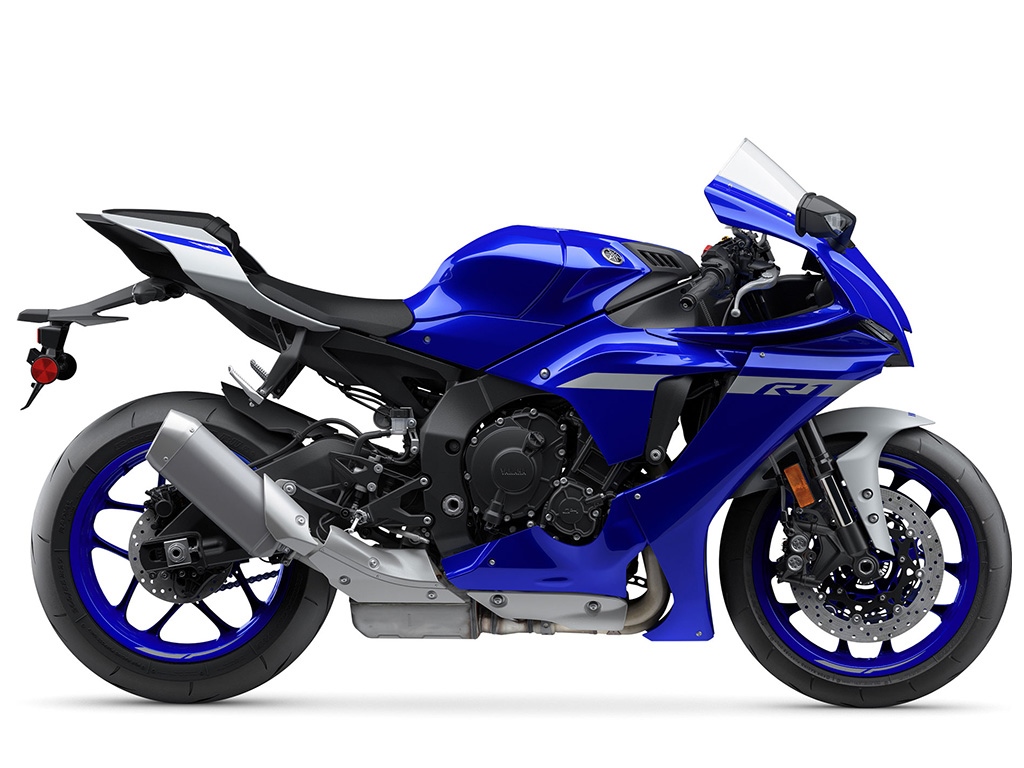Want to hit 200 mph on your YZF-R1?
Motorcycles have always offered exceptional value for those seeking high performance! The standout feature is their remarkable acceleration that rivals and beats supercars 10-20 times their cost.
This acceleration has been a primary draw and a key selling point for performance motorcycles. Not so much top speed.
While top speed is significant for riders and manufacturers aiming for headlines and bragging rights, it has always been secondary to acceleration and handling..
This does not mean to say that there isn’t a significant subset of riders who care about top speed.
No mainstream stock motorcycle ‘stock’ has hit a real 200 mph, and those that first came close were a few mph shy.
In contrast, supercars in the 1970s were reaching over 180 mph, with some exceeding 200 mph by the 1990s.
Motorcycles have never really competed with the fastest cars for top speed honours!
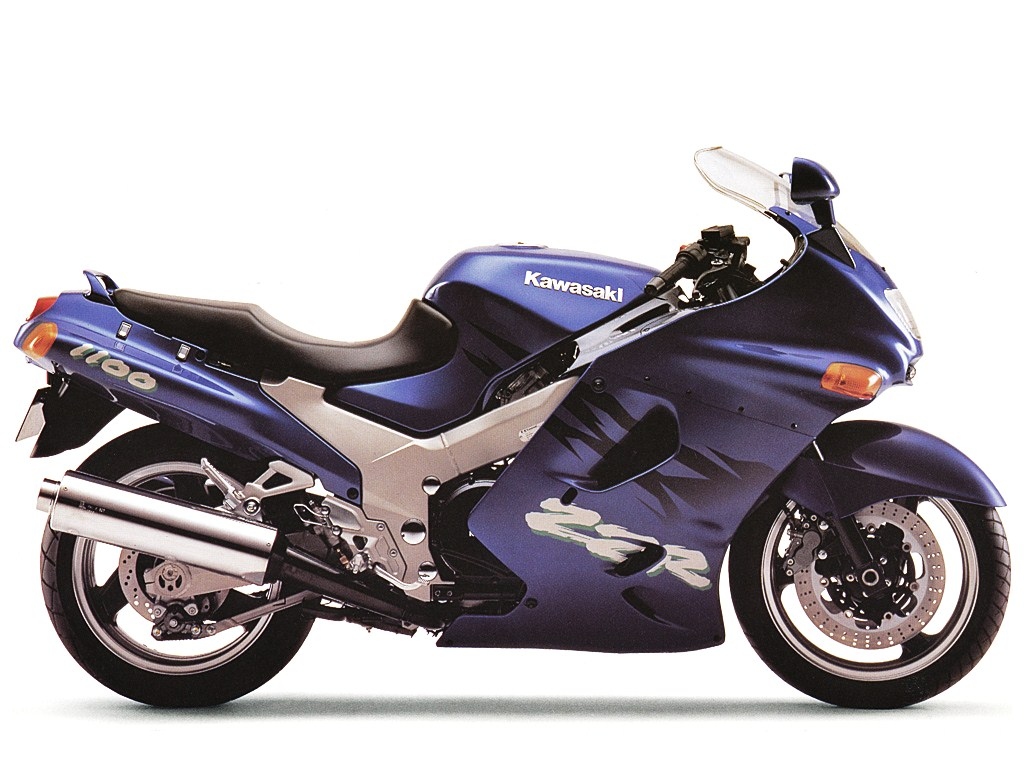
Still, motorcycle manufacturers historically showed an interest in top speed. As each decade saw moments when a new high-powered motorcycle surpassed the top speed of its predecessor, accompanied by media hype that boosted sales.
The top-speed wars peaked in the mid to late 1990s and early 2000s. Initially, the Honda Blackbird duked it out with, narrowly topping the Kawasaki ZZR1100, then the fastest production motorcycle.
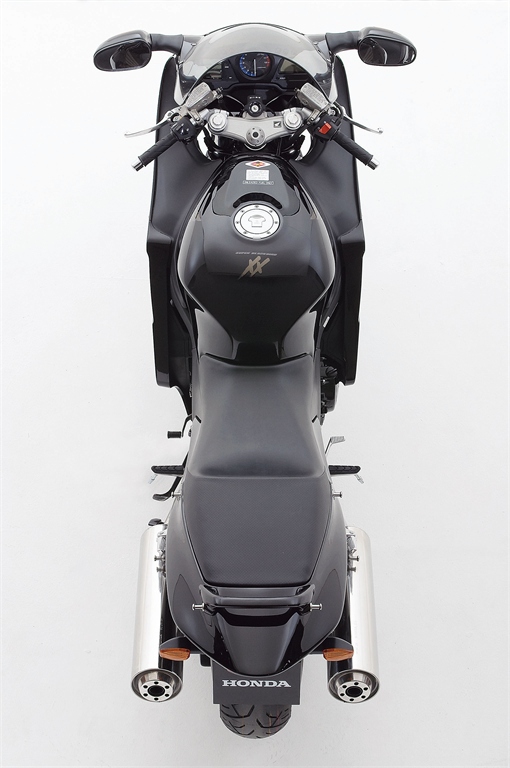
The competition intensified with the introduction of Suzuki’s GSX1300R Hayabusa in 1999 and then Kawasaki’s ZX-12R in 2000, both among the most powerful and aerodynamically efficient motorcycles of their time, vying for the title of fastest and aiming for that mythical 200 mph.
Headlines about 200 mph motorcycles captured not only the motorcycle media but also mainstream outlets and unwanted attention from authorities.
Public concern over easily accessible 200 mph motorcycles (despite none officially reaching that speed) prompted manufacturers to shift focus away from top speed as a precautionary measure.
To avoid new regulations, manufacturers adopted a self-imposed speed limit, ensuring no motorcycle, existing or new, could exceed 300 km/h (186 mph).
This became known as the gentleman’s agreement…
Post Gentlemans Agreement
As time progressed into the 2000s, top speed ceased to be the primary focus, but motorcycles continued to grow more powerful and lighter. This change was initially sparked by the arrival of the 1998 Yamaha YZF-R1, which came 1 year before the Hayabusa and also before the self-imposed speed limits, and was a sign of the times to come.
The 1998 Yamaha YZF-R1 was a motorcycle that arguably established the 1000cc superbike class we adore today, and was one of the few reasons for the shift from top speed to something else.
Coincidentally, or perhaps reflecting the shifting goals and trends, in 2003, World Superbike rules changed to allow 1000cc four-cylinder and 1200cc two-cylinder motorcycles to compete in the top production class, replacing the previous 750cc inline-four and 1000cc two-cylinder limits.
The Yamaha R1 shaking up the Superbike class, along with new WorldSBK rules, inevitably led to a new arms race.
1000 CC class wars
As manufacturers competed, their new 1000cc Superbikes became progressively lighter and more powerful.
By the early/mid 2000s, 1000cc superbikes matched the rear-wheel horsepower of Hyperbikes such as the first generation Hayabusa and ZX-12R while being 40–50 kg lighter.
Beyond initial acceleration, motorcycles such as the 2004 ZX-10R, producing similar peak power to the first generation Hayabusa and ZX-12R but being significantly lighter, outperformed the Hayabusa and ZX-12R but remained capped at 300 km/h due to the gentleman’s agreement.
Soon after this agreement took effect, tuners devised ways to bypass restrictions, offering fixes to unlock the full potential of existing and new motorcycles.
Over the next two decades or so, each new superbike release brought increased power.
Today, litre-class motorcycles produce 200 + horsepower at the crank, surpassing the 175 and 178 horsepower (excluding ram air) of the ‘200’ mph Hayabusa and ZX-12R.
The gentleman’s agreement persists today, while motorcycles have become much more powerful.
The question is, do we currently have 200 mph-capable motorcycles, and if so, how long have we had them for?
How fast could these Superbikes go without restrictions?
If you want a 200 mph motorcycle, what are your options, and what steps must you take?
We will first take a look at Yamaha…..
200 mph Yamaha Superbikes
Yamaha never got involved in the top speed wars officially and never had their own large capacity Hyperbike. Instead, Yamaha focused on their Superbike and Supersport classes among a few.
For the past 27 years, Yamaha has produced only one superbike, the YZF-R1, with the exception of the ultra-rare 750cc YZF-R7 – not to be confused with the newer YZF-R7.
Over this period, the YZF-R1 has appeared in various configurations and continually evolved from the groundbreaking 150-horsepower debut model in 1998 to the latest version boasting 200 horsepower.
With each new YZF-R1 release, the bikes have generally become more powerful, accelerative, and faster.
Below, we will review each model variation, briefly discuss its stock top speeds, and outline any modifications required to reach 200 mph.
Yamaha YZF-R1 98-01
| Power (Crank) | 150 HP @ 10,000 rpm |
| Power (Rear Wheel) | 130-135 HP |
The 1998–2001 Yamaha YZF-R1 came stock with 150 horsepower at the crank, typically producing 130–135 horsepower at the rear wheel, depending on the dyno and conditions/correction factors.
Compact but not highly aerodynamic, the first-generation R1 achieved stock top speeds of 170–177 mph, with a theoretical maximum of about 180 mph at the rpm limiter.
The 1998 -1999 models had no gentleman’s agreement speed limiter, while the 2000–2001 models did, though neither of them could reach a true 186 mph as stock.
With 130–135 rear-wheel horsepower, the 1998–2001 YZF-R1 substantially lacks the necessary power needed to crack 200 mph.
Adding a full exhaust, Dyno Jet kit, and air filter typically yields 10–15 horsepower, bringing the R1 to around 145-150 rear-wheel horsepower (165-170 crank).
With longer gearing and at best 150 rear-wheel horsepower from these modifications, the 1998–2001 YZF-R1 could reach just over 180 mph, with the 2000–2001 models gaining a couple of mph due to slight aerodynamic improvements.
But to hit that number would be in absolutely optimum conditions.
For this generation of YZF-R1, achieving 200 mph requires extensive engine modifications, such as cams, high-compression pistons, porting and polishing, and raising the RPM limiter to boost power.
These modifications could yield potentially 170-180 rear-wheel horsepower.
Given the 1998–1999 models’ poorer aerodynamics, this power level might achieve high 180s to just over 190 mph. The 2000–2001 models, being slightly more aerodynamic, could reach just above 190 mph.
Still shy of 200 mph!
To hit 200 mph, further extensive modifications such as boring out the cylinder for increased displacement, paired with the above modifications, to complement.
Or if you must, adding forced induction via a turbo would be necessary.
Without force induction, even with extensive engine tuning, 200 mph is a difficult target to hit for the first generation R1s unless you sink big money for a WSBK comparable spec motor.
Minimum mods to achieve 200 mph
- Full Exhaust System, Race Filter, intake mods, and heavy engine work such as cams, polished ports/ head, possibly Big Bore kit, Custom Dyno Tune/ longer gearing etc, Top Speed potential 200 mph
Guaranteed 200 mph.
- Same as the above, and/or Forced induction Top Speed potential 200+ mph
Yamaha YZF-R1 02-03
| Power (Crank) | 152 HP @ 10,000 rpm |
| Power (Rear Wheel) | 135-137 HP |
The 02-03 Yamaha YZF-R1 shares the same engine as the 1998–2001 models, with minor internal modifications that slightly increase power and RPM.
As the first fuel-injected YZF-R1, it provides modest improvements, delivering 135–137 rear-wheel horsepower stock.
However, it remains significantly underpowered for reaching 200 mph.
Stock, these bikes achieve approximately 175–178 mph, with a theoretical top speed of about 188 mph at the 12,250 RPM limiter. (If they could pull sixth gear to the limiter)
Aerodynamics are similar to the previous model; however, the frontal area is slightly reduced, which potentially could improve top speed.
Fuel injection allows for more precise tuning of any modifications, so this is a slight advantage over the carbureted models.
A full exhaust, air filter, and ECU flash or Power Commander can yield just over 150 rear-wheel horsepower. In addition, airbox modifications and/or velocity stacks could increase output to 155+ horsepower.
With this setup and optimised gearing, the bike might reach a true 185-188 mph.
Like the 1998–2001 model, achieving 200 mph requires extensive engine work, including cams, high-compression pistons, porting, and polishing.
These modifications could net the 02-03 Yamaha R1 175–180 horsepower, which may be sufficient to reach 200 mph, though not guaranteed.
For a more reliable path to 200 mph, forced induction (e.g., turbo) or increased displacement via cylinder boring would likely be necessary.
Minimum mods to achieve 200 mph
- Full Exhaust System, Race Filter, ECU flash/PC and heavy engine work/ cams, porting and polishing/big bore, Custom Dyno Tune/ longer gearing, Top Speed potential 200 mph
Guaranteed 200 mph.
- All of the above, and/or forced induction, Top Speed potential 200+ mph
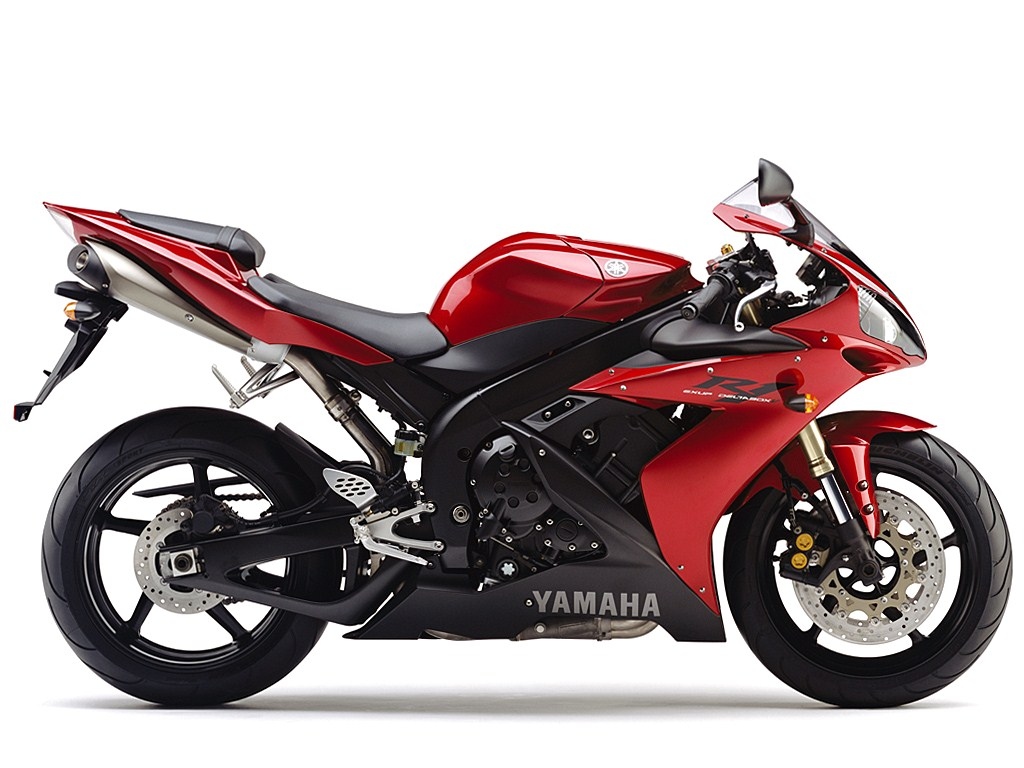
Yamaha YZF-R1 04-06
| Power (Crank) | 172 HP @ 10,000 rpm (180 HP Ram Air) |
| Power (Rear Wheel) | 150-155 HP |
The 2004–2006 Yamaha YZF-R1 marked a significant horsepower increase over the 2002–2003 model it replaced. This YZF-R1 was the first Yamaha to hit the magic 1000 bhp per ton power-to-weight ratio.
Featuring a new short-stroke, high-revving engine with a ram air system, it produced 172 horsepower at the crank and approximately 150-155 horsepower at the rear wheel.
In addition, this model comes equipped with a ram air system that boosts power as speeds increase. The claimed figure appears to be 8 horsepower, but not possible to measure on the majority of dynamometers.
This allowed the bike to frequently reach its gentleman’s agreement top speed limit of 186 mph.
The 2004–2006 YZF-R1 is not geared for 200 mph, so longer gearing is necessary.
Removing the top speed restriction alone could enable speeds slightly above 186 mph with a small rider and ideal conditions.
Adding a bolt-on exhaust system, air filter, and ECU flash/custom tune can increase output to 165+ rear-wheel horsepower. With longer gearing and the speed limiter removed, top speeds of 190–193 mph are achievable.
To close the gap to 200 mph, further engine tuning, such as cams and high-compression pistons, would be required to boost power to 180+ horsepower.
With this power level and optimised setup, the R1 could approach and would likely nudge or exceed 200 mph.
Minimum mods to achieve 200 mph
- Top Speed restriction removal, full Exhaust System, Race Filter, and mid-engine work, Custom Dyno Tune/ECU Flash/ longer gearing, Top Speed potential 200 mph
Guaranteed 200 mph.
- All of the above, and/or heavy engine work or forced induction, Top Speed potential 200+ mph
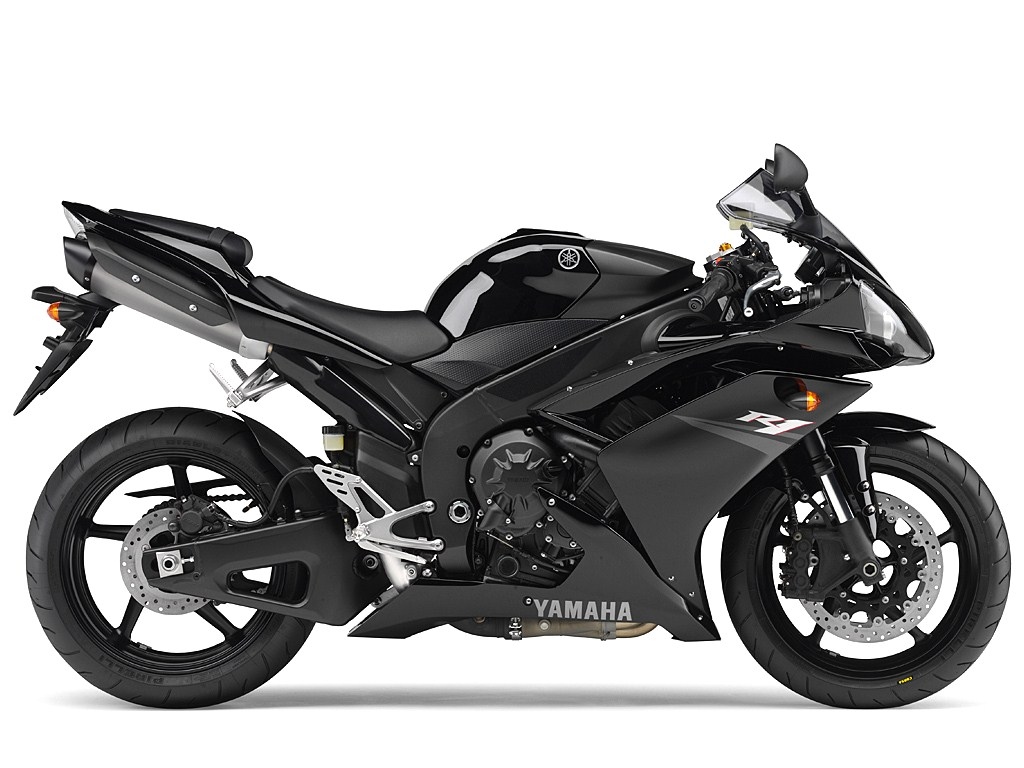
Yamaha YZF-R1 07-08
| Power (Crank) | 180 HP @ 13,000 rpm (189 HP Ram Air) |
| Power (Rear Wheel) | 160 HP |
The 2007–2008 Yamaha YZF-R1, the last of the screamer models, is arguably the most powerful R1 until the second-generation 2015 crossplane model. Building on the 2004–2006 model ethos of short-stroke, high revving engine to make power. It produced 160 at the rear wheel.
With this kind of power, it surpassed the first-generation Hayabusa in power, but is less aerodynamic.
Not geared for 200 mph, though theoretically capable of about 197 mph at the RPM limiter. This model could consistently hit the 186 mph electronic limiter, but with the limiter removed, 190+ mph is achievable, depending on the rider and conditions.
Standard bolt-on modifications, including a full exhaust system, air filter, and ECU flash or custom tune, can increase output to 165-170+ rear-wheel horsepower. This setup could yield a top speed of around 195 mph in ideal conditions.
Further modifications, such as airbox upgrades or velocity stacks plus cams, could push the 2007–2008 R1 to 180+ horsepower, allowing it to reach or slightly exceed 200 mph.
Minimum mods to achieve 200 mph
- Top Speed restriction removal and full Exhaust System, Race Filter, mild engine work, Custom Dyno Tune, longer gearing, Top Speed potential 200 mph
Guaranteed 200+ mph.
- All of the above, and/ heavy engine work, Top Speed potential 200+ mph
Yamaha YZF-R1 09-14
| Power (Crank) | 182 HP @ 13,000 rpm |
| Power (Rear Wheel) | 155-160 HP |
The 2009–2014 Yamaha YZF-R1 and the first of the crossplane-engined R1s, on average, produced slightly less power than the 2007–2008 model, with 155-160 rear-wheel horsepower, and aligned closer to the 2004–2006 model in terms of peak power rather than the 07-08 it replaced.
Stock, it is electronically limited, with top speeds ranging from 180–186 mph, though typically just above 180 mph, and not always reaching the 186 mph limit.
Removing the speed limiter alone would not push it close to 200 mph, as it lacks the necessary gearing and power, and it is arguably not as aerodynamic as previous models due to the larger frontal area.
Without the limiter in place, the top speed remains similar to the restricted figure.
Bolt-on modifications, including an air filter, full exhaust system, and ECU flash or custom tune, typically yield 165+ rear-wheel horsepower, enabling a top speed of approximately 190 mph.
To achieve 200 mph, additional modifications such as cams, intake mods, polishing, and high-compression pistons are required to push rear-wheel power above 180+ horsepower.
With these upgrades, the 2009–2014 YZF-R1 could reach 200 mph.
Minimum mods to achieve 200 mph
- Top Speed restriction removal and complemented with full Exhaust System, Race Filter, mid to heavy engine work, Custom Dyno Tune, longer gearing, Top Speed potential 200 mph
Guaranteed and exceed 200 mph.
- All of the above, and/ or Forced Induction Top Speed potential 200+ mph
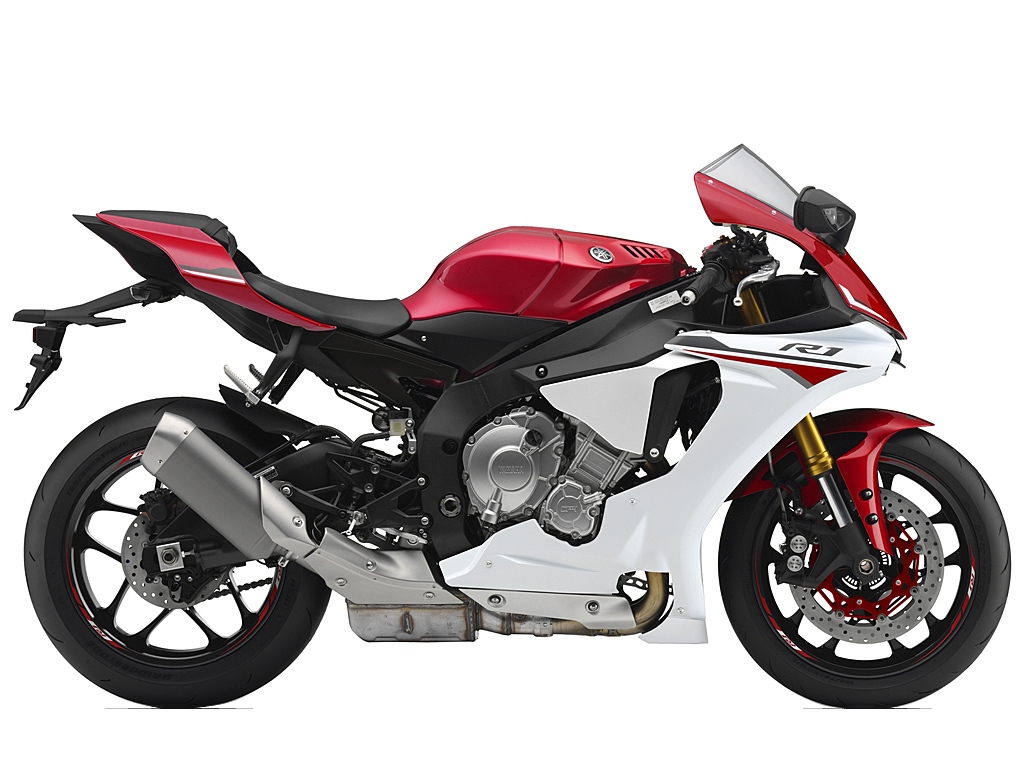
Yamaha YZF-R1 15-19
| Power (Crank) | 1197 HP @ 13,500 rpm |
| Power (Rear Wheel) | 180-185 HP |
The 2015 -2019 Yamaha YZF-R1 offers a significant power increase over the 2009–2014 model, producing 180–185 rear-wheel horsepower stock, with improved aerodynamics and ergonomics.
In stock form, it easily reaches its electronic speed limiter of 186 mph.
Removing the speed limiter alone enables 200 mph, with stock gearing allowing a theoretical top speed of 205 mph at the 14,300 RPM limit.
With a full exhaust system ( or decat), air filter, and ECU flash, 200 mph is readily achievable.
The 15-19 YZF R1 could hit the RPM limiter at 205 mph, and slightly higher speeds with longer gearing are possible.
Pretty much all R1s of this era have ECU flash, filter and decat exhaust as a minimum and can all reach 200 mph in ideal conditions with a normal jockey.
Minimum mods to achieve 200 mph
- Top Speed restriction removed, Top Speed potential 200+ mph
Guaranteed 200+ mph
- All of the above the plus exhaust, filter, and tune, Top Speed potential 205-207 mph
Yamaha YZF-R1 20-25
| Power (Crank) | 197 HP @ 13,500 rpm |
| Power (Rear Wheel) | 185-190 HP |
Pretty much the same story as is for the 2015-2019 Yamaha R1.
Slightly better aerodynamics and arguably responds better to modifications due to more stringent EURO emissions.
With just the speed limiter removed, 200 mph plus is a done deal.
With a Full System/Decat, filter and ECU flash, these machines can produce more than 195 horsepower and will find it even easier to crack 200 mph compared to the 2015-2019 thanks to more power and better aerodynamics.
Minimum mods to achieve 200 mph
- Top Speed restriction removed, Top Speed potential 200+ mph
Guaranteed 200+ mph
- All of the above plus the exhaust, filter, and tune, Top Speed potential 205 mph

Conclusion
With sufficient investment in tuning, nearly any motorcycle with a solid baseline can reach 200 mph, and all models past and present within the Yamaha YZF-R1 series are no exception.
Earlier models require significant performance modifications to achieve the coveted 200 mph mark, but it’s feasible with enough effort and resources.
The 2015–2025 YZF-R1 models, however, can hit 200 mph by simply removing the top speed limiter, making them the most straightforward and cost-effective choice for this goal.
They won’t alwayst hit 200 mph and will need a road of significant length, but with a normal-sized rider and good conditions, it is a done deal.
For those who prefer the challenge of older models and still want a 200 mph motorcycle, the 2007–2008 YZF-R1 offers excellent value. In many markets, these can be purchased used for significantly less, sometimes half the price, or more of the 2015+ models used.
Due to their age, many pre-owned 2007–2008 R1s already come equipped with modifications such as exhaust systems, air filters, ECU flashes, and other upgrades that boost power and remove restrictions, and are thus often capable of reaching 190 mph or more.
Depending on your location and mechanical expertise, minimal additional engine work, such as cams, intake mods, or high-compression pistons, could provide just enough power to surpass 200 mph at perhaps not a significant cost.
- Recommended approach for a budget-friendly 200 mph YZF-R1:
- Choose a used 2007–2008 YZF-R1, ideally with existing mods (exhaust, air filter, ECU flash).
- Add airbox modifications or velocity stacks to achieve 170+ rear-wheel horsepower.
- Remove the top speed limiter and optimise gearing.
- If needed, perform mid-engine tuning (e.g., cams or high-compression pistons) to ensure 200 mph is reached.
Worthy Top Speed enhancing modification mentions
There are additional methods to boost top speed beyond those previously mentioned, but they were left out.
Installing a larger windscreen can offer better rider protection from wind resistance, potentially increasing top speed by 2–5 mph, depending on the bike and rider size.
Removal of mirrors is another common technique which can add a few extra mph to the top speed.
The most significant impact often comes from substantially lowering the motorcycle.
This can be done by lowering the forks in the yokes and using a lowering kit for the rear suspension. Depending on the bike, the starting speed, and the target speed, this modification can yield up to 10 mph in additional top speed under certain conditions.
Next up, we will look at other brands if Yamaha is not your cup of tea.



